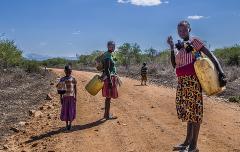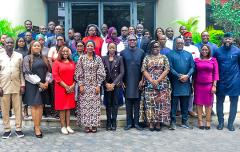New SEforALL report shows path to more efficient power and water use in rural India
A new report published by the Sustainable Energy for All (SEforALL) initiative sets out an innovative scheme to improve the way power is supplied to pump water for food production in India, breaking a vicious cycle of groundwater depletion, poor farm productivity, deteriorating electricity services and bankrupt power utilities.
The efficient and cost-effective delivery of power subsidies to agriculture is one of the key issues facing the Indian power sector – a sector crucial for the Indian government’s plans to speed up the growth of small and medium-sized businesses, generate jobs and create equitable wealth.
India is the only country that provides unmetered power supply to the agricultural sector for irrigation, charging a flat tariff. Not only has this proved hard to increase in line with costs, but the power is often diverted for non-farm use.
In many areas, the level of these subsidies and the way they are delivered has severely distorted both the power and water sectors -- a situation exacerbated by their use as a tool in electoral politics. Although farmers are ostensibly the beneficiaries, they suffer from an effective ‘de-electrification’ with rationing and poor quality of power supply, while in some States the over-exploitation of groundwater has reached near-crisis levels.
The SEforALL report, “Direct Delivery of Power Subsidy to Agriculture in India”, proposes a cost-effective scheme that would create a strong incentive for farmers to use electricity and groundwater more efficiently, since they would be entitled to keep the benefits of their energy savings even if they enjoy free power.
The key objective is to increase the benefit to farmers and reduce their production risks, without any extra burden on the government or the power utility. At the same time, the scheme would boost the utilities’ financial performance, allowing them to invest in improved electricity services. Even if State governments want to provide free power, they can significantly reduce the burden on their budget while protecting the interests of the farmers.
Written by Mohinder Gulati, Chief Operating Officer of SEforALL, and Sanjay Pahuja, Lead Water Specialist at the World Bank Group, the monograph is based on research and discussions with farmers carried out by International Water Management Institute and Infosys at the request of the former Planning Commission of India (now NITI Ayog), and funded by the Energy Sector Management Assistance Program (ESMAP).
The report does not assess the merits of power subsidies themselves, which are a matter of public policy choice, but presents practical ways to reduce the cost of delivery – higher in some States than the subsidy actually delivered to the farmers.
Building on experience of an existing scheme in Gujarat, it goes further by proposing the use of new technology such as remote controls for irrigation pumping systems, and mobile phones that can provide information on electricity consumption.
Under the proposed scheme, farmers could choose either to continue with the current system of limited hours of free or subsidized power supply, or to adopt a new system of longer, more convenient hours at the same rate, but with the subsidy denominated in quantity of electricity used rather than hours of supply.
The scheme has four key components. First, electricity feeders would be segregated to provide power separately to farmland and villages, providing rapid power supply improvements for rural residential and commercial consumers. Villagers would gain power for household lighting and small appliances, boosting opportunities for education, entertainment and micro-enterprises. At the same time, power supply to farms can be better matched to agricultural needs.
A ‘minimum energy support’ (MES) would provide an annual electricity allocation to each farmer for agricultural use, denominated in quantity of electricity (kWhs), with the amount of subsidy estimated on the basis of the size of the land holding. Electricity saved by the farmer through efficient use or conservation could be ‘banked’ at the regulated tariff, increasing the incentive to use energy and groundwater more efficiently even while receiving free power.
Smart metering that can be read online in real time is a well-established and cost-effective technology that could be easily adopted in India, where mobile connectivity is widespread. Farmers could use their mobile phones to control their pump sets and power use remotely, and also receive information on power supply, consumption and billing.
Finally, performance-based incentives for power utility employees would be critical in gaining their support for implementing and sustaining the scheme.



